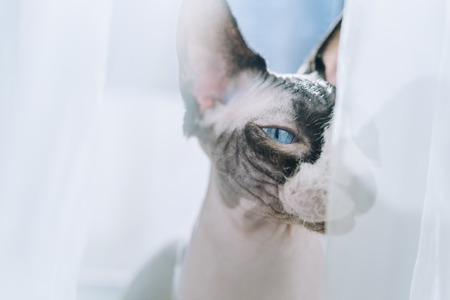Understanding Your Cat’s Unique Needs
If you’re a cat parent, you’ve probably noticed that your feline friend approaches grooming very differently than dogs do. While both animals need regular care, cats have unique requirements that make choosing the right shampoo especially important. Unlike dogs, cats are meticulous self-groomers and rely on their tongues to keep their coats clean, which means their skin is more sensitive to harsh chemicals and fragrances. This sensitivity is partly due to the natural oils produced by their skin—oils that help maintain a healthy, shiny coat and provide protection against environmental irritants. Using the wrong kind of shampoo can strip away these essential oils, potentially leading to dryness, irritation, or even allergic reactions. Understanding these differences is key when selecting a shampoo that will be both safe and effective for your pet. By recognizing that cats have specific grooming needs—rooted in their biology and habits—you’ll be better prepared to choose products tailored just for them, supporting their well-being and keeping their fur looking its best.
2. What Makes a Shampoo Safe for Cats?
When it comes to choosing the best shampoo for your cat, safety is always the top priority. Cats have unique grooming habits and sensitive skin, which means not every pet shampoo on the market is suitable for them. Understanding what ingredients to seek out—and which ones to steer clear of—can make all the difference in keeping your feline friend clean, comfortable, and healthy.
Key Ingredients to Look For
Safe cat shampoos use mild, non-toxic components designed specifically for feline skin and fur. Here are some common ingredients you should look for:
| Ingredient | Benefits |
|---|---|
| Aloe Vera | Soothes skin, provides gentle moisture, helps reduce irritation |
| Oatmeal | Calms itchy or dry skin, offers natural relief for allergies |
| Coconut-Based Surfactants | Gentle cleansing action without stripping natural oils |
| Chamomile Extract | Mild anti-inflammatory properties; good for sensitive skin |
| Vitamin E | Nourishes coat and supports healthy skin barrier |
Ingredients to Avoid in Cat Shampoos
Cats groom themselves by licking their fur, so any residue left behind from harsh chemicals can be ingested. Here’s what you should keep out of your cat’s bath routine:
| Ingredient to Avoid | Why Its Harmful |
|---|---|
| Essential Oils (e.g., Tea Tree Oil) | Toxic to cats even in small amounts; can cause liver damage or neurological issues |
| Sulfates (SLS/SLES) | Irritate sensitive skin and strip natural oils from coat |
| Artificial Fragrances & Dyes | May trigger allergic reactions or skin irritation; unnecessary additives for cats well-being |
| Parabens & Phthalates | P otential endocrine disruptors; not needed in pet products |
| Alcohols (except fatty alcohols like cetyl/stearyl) | Drys out the skin and can cause discomfort or flaking |
Why Human Shampoos Are a No-Go for Cats
No matter how gentle your own shampoo claims to be, never use human products on your cat. Feline skin is more acidic than human skin, making them much more sensitive to pH imbalances. Using human shampoos—even those labeled as “natural”—can disrupt their protective barrier and lead to irritation or infections.
The Takeaway: Read Labels Carefully
Your cat depends on you to choose products that keep them safe and comfortable. Always double-check ingredient lists before making a purchase, and when in doubt, consult with your veterinarian about the best options for your pet’s unique needs.

3. Types of Cat Shampoos: Pros and Cons
When it comes to choosing the best shampoo for your cat, understanding the different types available can make all the difference in both safety and effectiveness. Here’s a quick overview of the most popular options you’ll find on American pet store shelves—and what you should know about each.
Hypoallergenic Shampoos
Designed for cats with sensitive skin or allergies, hypoallergenic shampoos are free from harsh chemicals, fragrances, and dyes. Pros: Gentle on the skin, reduce chances of irritation or allergic reactions. Cons: May not be as effective at removing tough dirt or odors compared to regular formulas.
Medicated Shampoos
If your cat has been diagnosed with skin conditions like fungal infections, dandruff, or flea infestations, medicated shampoos—often prescribed by veterinarians—can help manage these issues. Pros: Targeted relief for specific skin problems; can soothe itching and promote healing. Cons: Not suitable for routine use on healthy cats; some formulas have strong smells or require longer rinsing times.
Waterless Shampoos
Perfect for cats who despise baths (which is most of them!), waterless shampoos come in sprays, foams, or wipes. These products clean and deodorize without the need for water. Pros: Convenient for quick clean-ups; ideal for travel or spot cleaning. Cons: May not fully remove heavy grime; should not replace regular bathing entirely if your vet recommends it.
Natural Shampoos
Naturally derived cat shampoos feature ingredients like oatmeal, aloe vera, and essential oils. They appeal to pet parents looking for eco-friendly and gentle choices. Pros: Fewer synthetic chemicals; often biodegradable and cruelty-free. Cons: Always check that “natural” ingredients are safe for cats—some essential oils can be toxic to felines.
The Bottom Line
No single shampoo fits every cat’s needs, so consider your pet’s skin type, health conditions, and temperament when making your selection. Consulting your veterinarian before trying a new product is always a smart move to keep your furry friend happy and healthy.
4. Reading Labels Like a Pro
When it comes to choosing the best shampoo for your cat, understanding product labels is essential. American pet stores are full of shampoos boasting “natural,” “hypoallergenic,” or “vet-approved” claims, but what do these really mean for your furry friend? Here’s how to decode those labels and make informed choices.
Tips for Deciphering Shampoo Labels
- Check the Ingredient List: Look for recognizable, gentle ingredients like oatmeal, aloe vera, or chamomile. Avoid harsh chemicals such as parabens, sulfates, and artificial fragrances.
- Ignore Buzzwords: Terms like “organic,” “all-natural,” or “premium” aren’t always regulated. Always read past the front label and check the actual ingredient list.
- Look for Certifications: In the U.S., products with seals from organizations like the USDA Organic or EPA Safer Choice have met stricter guidelines.
- Consider Your Cat’s Needs: Hypoallergenic shampoos can be ideal for sensitive skin, while medicated options may target specific issues like fleas or dandruff.
Common Marketing Claims in American Pet Stores
| Marketing Claim | What It Really Means | What To Watch For |
|---|---|---|
| “Tear-Free” | Formulated to minimize irritation if it gets in eyes | Still rinse thoroughly and avoid eye contact when possible |
| “Veterinarian Recommended” | A vet has endorsed it, but not necessarily tested on every cat type | Look for specifics—does it address your cat’s particular needs? |
| “Natural/Organic” | May contain natural ingredients, but not always 100% | Read full ingredient lists; organic status should be certified |
| “Deodorizing” | Additives mask odors temporarily | Scented products may irritate some cats’ skin or noses |
| “Hypoallergenic” | Formulated to reduce allergic reactions | No universal standard—test a small patch first if unsure |
Navigating Store Aisles with Confidence
The key is to balance marketing promises with what’s actually listed on the back of the bottle. Don’t hesitate to ask store staff questions or consult your veterinarian if you’re uncertain about any ingredient or claim. By reading labels like a pro, you’ll ensure your cat gets a safe and effective shampoo tailored to their unique needs.
5. How to Test and Introduce a New Shampoo
Introducing a new shampoo to your cat’s grooming routine can be a smooth experience if done thoughtfully. Cats are creatures of habit, and sudden changes may cause stress or even skin reactions. Here’s a step-by-step guide to safely test and incorporate a new shampoo at home, ensuring your feline friend stays comfortable and healthy.
Step 1: Read the Label Carefully
Before using any new product, check the ingredient list for potential allergens or irritants. Make sure the shampoo is specifically formulated for cats and is free from harmful chemicals like parabens, sulfates, or artificial fragrances.
Step 2: Perform a Patch Test
To rule out allergic reactions, apply a small amount of shampoo diluted with water to a tiny area on your cat’s neck or back. Wait 24 hours and observe for signs of redness, itching, or swelling. If your cat shows any discomfort, discontinue use immediately.
Step 3: Gradually Introduce the Scent
Cats rely heavily on scent for comfort. Let your cat sniff the closed shampoo bottle before opening it. You can also place a small dab (again, closed container) near their bedding for a few hours to familiarize them with the new smell.
Step 4: Prepare the Bathing Area
Set up a calm environment with all your supplies within reach—towels, brushes, treats, and the new shampoo. Use lukewarm water and ensure the room temperature is cozy to keep your cat relaxed during the process.
Step 5: Start with a Small Wash
For the first wash, dilute the shampoo more than usual and use it only on one part of your cat’s body (such as just their legs). Monitor how your cat reacts during and after the wash. Give lots of positive reinforcement with gentle words and treats throughout.
Step 6: Observe Your Cat Post-Bath
After washing, dry your cat thoroughly and keep an eye out for any delayed skin reactions over the next couple of days. If everything looks good—no excessive scratching or licking—you can proceed to use the shampoo for full baths in the future.
Pro Tip:
If your cat is especially anxious about bathing, try introducing grooming sessions in short bursts over several days. Building trust through gentle handling goes a long way toward making bath time less stressful for both of you.
6. Alternatives and When to Ask a Vet
When it comes to keeping your cat clean, traditional shampoos aren’t always your only—or even your best—option. Understanding when to try do-it-yourself (DIY) solutions, when to skip the bath entirely, and when to consult a veterinarian can help you make smart decisions for your feline friend’s health and comfort.
DIY Cat Cleaning Options
If your cat is only mildly dirty or has a spot that needs attention, you might not need a full bath. A damp washcloth or pet-safe wipes can work wonders for removing dirt from paws or fur without stressing your cat. For odor issues, baking soda sprinkled on the coat and then brushed out can freshen things up safely. Always avoid using human baby wipes or products containing alcohol, essential oils, or fragrances that can irritate feline skin.
When to Skip Shampoo Altogether
Cats are naturally clean animals thanks to their grooming habits. In many cases—especially for indoor cats—a regular brushing routine is enough to keep their coats healthy and shiny. Avoid bathing your cat if they are stressed, ill, very young (kittens), or recovering from surgery unless specifically directed by your vet. Over-bathing can strip natural oils and actually worsen skin or coat problems.
Knowing When Professional Help Is Needed
If your cat develops persistent skin issues, such as redness, bald patches, excessive dandruff, or sores, it’s time to reach out to a veterinarian. Sudden changes in grooming behavior or foul odors may signal underlying health problems that require professional assessment rather than just a change in shampoo. Vets can recommend medicated shampoos or alternative treatments tailored to your cat’s unique needs.
Key Takeaway
While it’s tempting to reach for the nearest shampoo or try home remedies, remember: less is often more when it comes to cleaning cats. Prioritize gentle options, observe your cat’s reactions closely, and never hesitate to seek veterinary advice if something seems off.


